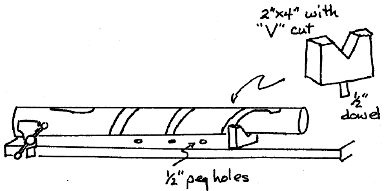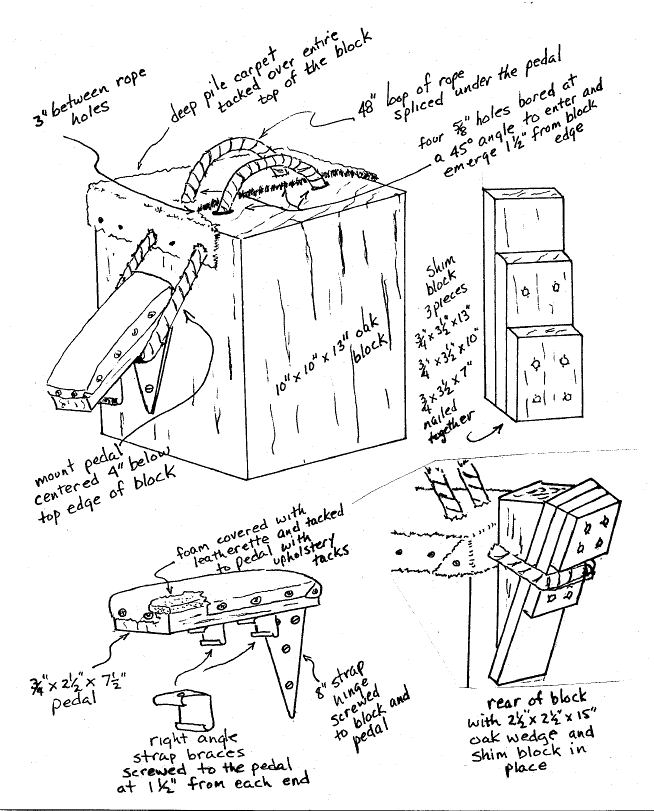

The shape of the walking stick makes it a challenging piece to hold firmly while working with two hands. I have found two methods that have proven satisfactory. The method I use in my studio is that of the bench vise and V-block as illustrated below. Holes in the bench-top allow the V-block to be moved to support the area under which mallet blows are being struck.

The device that I designed for use at exhibits appears below and is a modification of a tool called a Chinese carving bench. The body is a heavy block of wood with a continuous piece of rope passed through the diagonally drilled holes and spliced under a hinged pedal. A four-foot length of rope coupled with the use of a shim block and wedge allows me to hold anything from an 8 inch diameter log down to something the size of a pencil. To secure a large piece, I use only one of the holding loops and the rope is not placed around either angle bracket of the pedal. A thick piece of carpet pads the top of the block to keep from marring the carving while a piece of foam covered with leatherette is used to pad the pedal. There is nothing special about the dimensions of the block. Those given in the diagram just happen to pertain to the block I found available. The dimensions for the placement of the holes and the pedal however, are important in order to achieve the proper leverage.

When sitting in front of the block, (I'm right handed) my left leg is against the side of the block with the heel hooked around the far corner. My right leg lays across the pedal so as to bear on it just above the ankle. This allows me to hook my toe around the front corner of the block to further steady it. During long periods of carving I will exactly reverse that posture from time to time in order to avoid fatigue. However in the reversed position the blow of the gouge and mallet is driving the block away from the supporting heel and toe making it more difficult to hold steady.